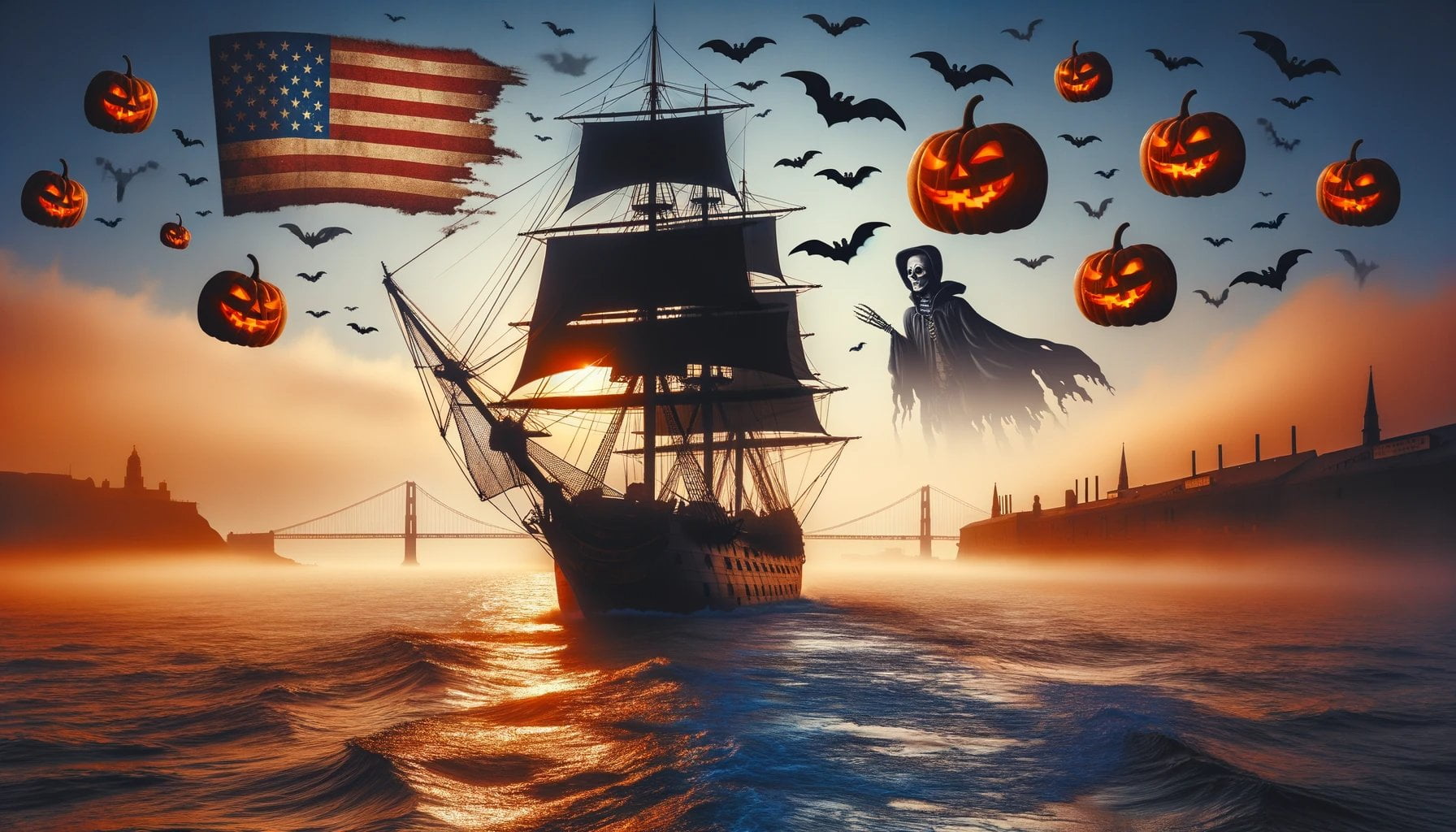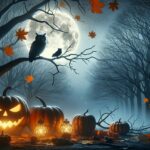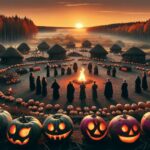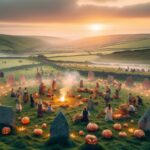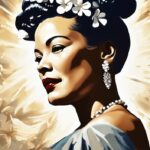Halloween, with its iconic imagery of costumes, jack-o’-lanterns, and haunted houses, has become an integral part of American culture. But have you ever wondered when this beloved holiday first made its way across the Atlantic? Delving into the annals of history, we seek to unravel the mystery surrounding Halloween’s arrival in America. By examining centuries-old traditions, intercultural exchanges, and the influence of early settlers, we hope to shed light on the origins of this enchanting celebration on American soil. Join us as we embark on a journey through time to uncover the fascinating story behind the advent of Halloween in America.
Key Takeaways:
- Halloween first came to the United States in the 1840s and has since become a widely celebrated holiday.
- The observance of Halloween can be traced back to the ancient Celtic festival of Samhain, which was celebrated on October 31.
- American colonists are credited with bringing Halloween to the United States for the first time.
- Halloween was brought to America by Irish immigrants who were fleeing a potato famine in the 1840s.
- Halloween pranks and the phrase “trick or treat” became widespread in the U.S. after World War II, when rationing ended and candy became more readily available.
- Halloween costumes became popular in the mid-20th century when mass-produced costumes became more affordable.
- The English word “Halloween” comes from “All Hallows’ Eve,” the evening before the Christian holy days of All Hallows’ Day and All Souls’ Day.
- Halloween has its roots in Celtic traditions and later merged with existing agricultural traditions in the United States.
- Halloween is celebrated on October 31 each year.
Citations:
- Reuters Life!. “The history and facts of Halloween.” Reuters, 30 Oct. 2011,
- KidzWorld. “When Did Halloween First Come To America?” KidzWorld,
When Did Halloween First Come to America?
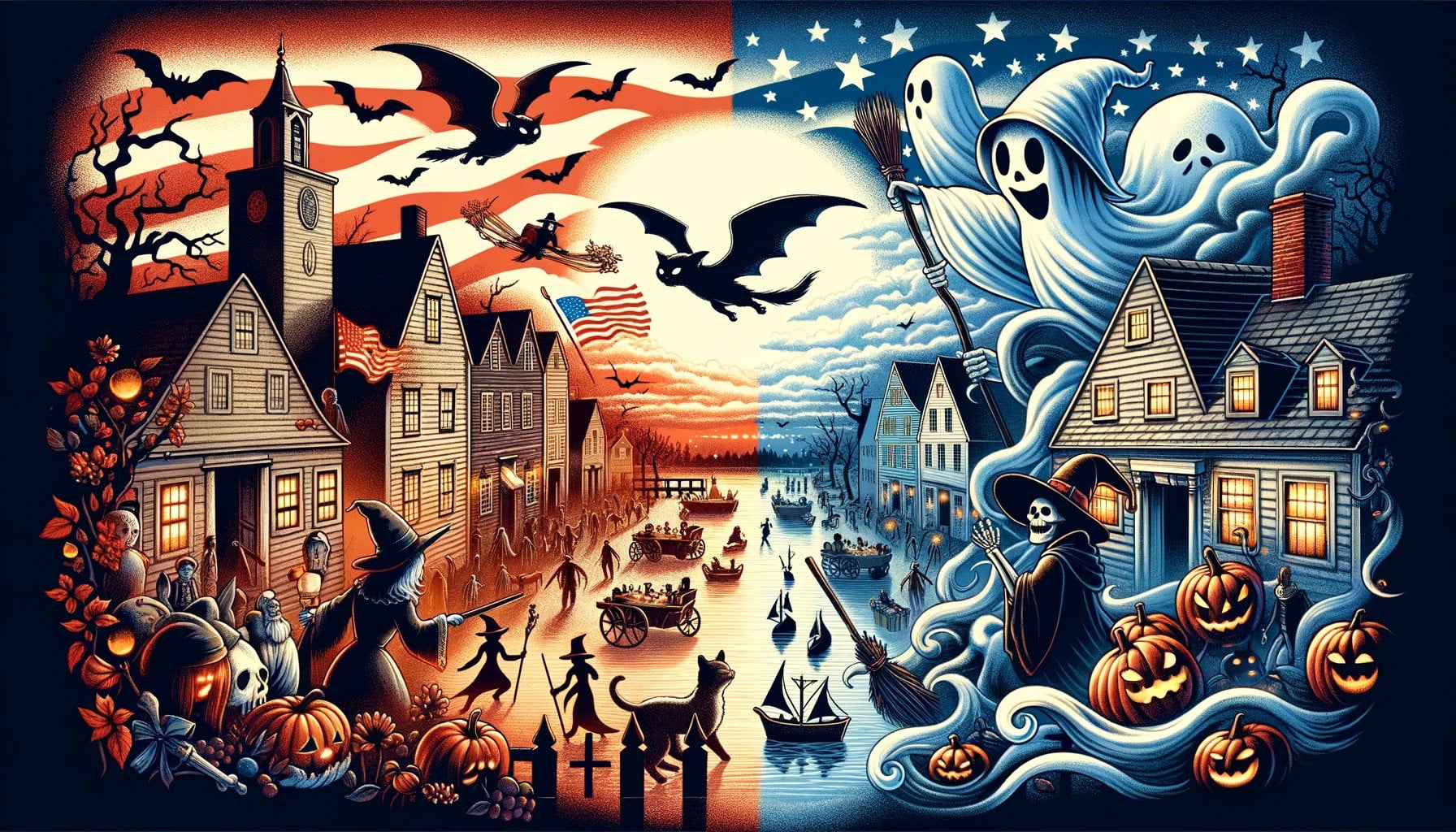
Halloween, a holiday shrouded in mystery, has become an integral part of American culture. But have you ever wondered when this spooky celebration first arrived in the United States? In this article, we will delve into the history of Halloween in America and trace its origins back to its ancient roots.
The Ancient Celtic Festival of Samhain
To understand the arrival of Halloween in America, we must first explore its ancient origins. Halloween can be traced back to the ancient Celtic festival of Samhain, which marked the end of the harvest season and the beginning of winter. Celebrated on October 31st, Samhain was a time when the Celts believed that the line between the living and the dead was blurred.
The Influence of American Colonists
The observance of Halloween was brought to America by European settlers, particularly the Irish. The Irish immigrants, who arrived in the 1840s, fleeing the devastating potato famine, brought with them their traditions and customs, including Halloween. It was during this time that Halloween first took root in America.
Evolution and Cultural Assimilation
Over the years, Halloween in America evolved and assimilated with existing cultural traditions. The English phrase “All Hallows’ Eve,” which refers to the evening before the Christian holy days of All Hallows’ Day (All Saints’ Day) and All Souls’ Day, eventually transformed into “Halloween.” This merging of customs and traditions formed the basis for the Halloween we know today.
Halloween Pranks and “Trick or Treat”
After World War II, Halloween gained further popularity in America. As rationing ended and candy became readily available, Halloween pranks and the phrase “trick or treat” became widespread. Children would dress up in costumes, go door-to-door, and ask for treats, adding a playful and mischievous element to the holiday.
The Rise of Halloween Costumes
In the mid-20th century, mass-produced costumes became more affordable, leading to the widespread adoption of Halloween costumes. People of all ages began dressing up as various characters, creatures, and iconic figures, embracing the opportunity to express their creativity and immerse themselves in the festive spirit.
The Modern Celebration of Halloween
Today, Halloween is celebrated on October 31st each year, with festivities ranging from trick-or-treating to costume parties and haunted houses. It has become a beloved holiday that bridges the gap between ancient customs and modern traditions, bringing communities together in a spirit of fun, imagination, and delightful fright.
In conclusion, Halloween’s arrival in America can be traced back to the 1840s when Irish immigrants introduced their customs to the United States. Over time, Halloween assimilated with existing cultural practices, evolved, and became deeply ingrained in American society. So as you don your costume and enjoy the spooky festivities, remember the rich history behind this cherished holiday.
Sources:
- Reuters Life!. “The history and facts of Halloween.” Reuters, 30 Oct. 2011,
- KidzWorld. “When Did Halloween First Come To America?” KidzWorld,
Have you ever wondered which ancient Celtic festival is considered the origin of Halloween? Learn more about it here.
Curious about why owls are associated with Halloween? Discover the fascinating reasons behind it by clicking here.
Want to know the ancient origin of Halloween? Find out all about it here.
Early American Celebrations and Adaptations
Halloween, a holiday widely celebrated in the United States, has a rich history that dates back to ancient Celtic traditions. The observance of Halloween can be traced back to the ancient Celtic festival of Samhain. However, Halloween first came to America in the 1840s with Irish immigrants who were fleeing the potato famine.
The celebration of Halloween in the United States initially faced limitations due to the rigid Protestant belief systems that were prevalent in colonial New England. The Protestant influence kept the holiday’s observance to a minimum. However, over time, Halloween began to blend with other cultures and evolve into the holiday celebrated today.
During the mid-1800s, Irish immigrants brought their Halloween traditions, including dressing up in costumes, asking their neighbors for food and money, and playing pranks to the United States. These traditions helped shape the celebrations of Halloween into what we know today.
One significant aspect of the holiday’s transformation in America is its connection to the Catholic Church. The Catholic Church turned November 1st, the original date of Samhain, into a religious holiday called “All Saint’s Day” or “All Hallows,” making October 31st the date of “All Hallow’s Eve” or Halloween.
Throughout the years, Halloween has evolved considerably in the United States. Many of the holiday’s connections to All Saints’ Day and All Souls’ Day have become less prominent, and new secular traditions have emerged.
Today, Halloween is celebrated on October 31st each year, with people of all ages dressing up in costumes, trick-or-treating, attending parties, and participating in various festive activities.
Key Takeaways:
- Halloween first arrived in America in the 1840s with Irish immigrants, who brought their traditions and customs.
- The rigid Protestant beliefs in colonial New England limited the observance of Halloween at first.
- Halloween assimilated with other cultural influences over time, leading to its evolution into the holiday celebrated today.
- The Catholic Church played a role in connecting Halloween to the religious holiday of “All Saint’s Day.”
- New secular traditions have emerged in Halloween celebrations, reducing the holiday’s connections to All Saints’ Day and All Souls’ Day.
Role of Irish Immigrants in Shaping Halloween
The history of Halloween in America is rich and fascinating, with the customs and traditions of this holiday deeply rooted in different cultural influences. One significant group that played a crucial role in shaping Halloween as we know it today was the Irish immigrants who arrived in America during the 1840s. Let’s explore the profound impact they had on this beloved holiday.
Irish Roots of Halloween
Halloween finds its origins in the ancient Celtic festival of Samhain, which was celebrated in Ireland during the pre-Christian era. Samhain marked the end of summer and the beginning of winter, a time associated with the spirits of the dead. It was a time when the boundaries between the human world and the spirit world were believed to be blurred, allowing for communication and interaction with departed loved ones.
The Great Irish Famine and Halloween’s Journey Across the Atlantic
The custom of celebrating Halloween did not immediately cross the Atlantic with European settlers. Early Puritanical beliefs and the lack of holidays limited the observance of Halloween in the United States. However, this began to change when a significant event occurred in Ireland – the Great Irish Famine.
During the potato famine of the mid-19th century, millions of Irish people sought refuge in America, fleeing the devastating effects of the famine. Alongside these immigrants came their cherished Halloween traditions, which they embraced as a means of letting off steam and preserving their cultural heritage. The Irish brought with them the age-old customs of bobbing for apples, storytelling, and dressing up in costumes, which eventually gained popularity and became integrated into American Halloween celebrations.
Evolution of Halloween in America
The arrival of Irish immigrants in America brought a renewed energy and fervor to Halloween celebrations. The holiday began to take on a distinctive American flavor, blending the traditions and practices of various cultures. It also assimilated with other holidays like Thanksgiving and Christmas, resulting in a unique and diverse celebration.
Key Takeaways:
- The custom of celebrating Halloween in America was significantly influenced by Irish immigrants who arrived during the 1840s.
- The origins of Halloween can be traced back to the ancient Celtic festival of Samhain in Ireland.
- Halloween gained popularity in America when Irish immigrants brought their traditions and customs, such as bobbing for apples and dressing up in costumes, during the Great Irish Famine.
- The Irish immigrants played a pivotal role in shaping how Halloween is celebrated in the United States, contributing to its unique blend of traditions and customs.
- Today, Halloween is celebrated in America on October 31st and is associated with activities like trick-or-treating, costume parties, and watching Halloween movies.
Sources:
– History: Halloween 2023: Origins, Meaning & Traditions
– Irish Post: How The Great Irish Famine brought Halloween to America
Popularization and Commercialization of Halloween in America
Origins and Spread of Halloween
– The word “Halloween” comes from “All Hallow’s Eve,” a Christian holy day precursor to All Hallow’s Day and All Souls’ Day.
– Halloween finds its roots in the ancient Celtic festival known as Samhain, which marked the end of the harvest season and the start of winter.
European Influences and Traditions
– European immigrants, particularly the Irish, have greatly influenced Halloween traditions in America.
– Dressing up in costumes and going house to house asking for food or money evolved from European customs, leading to the modern-day “trick-or-treat” tradition.
Commercialization of Halloween
– Halloween has transitioned from ancient and somber origins to a more commercialized holiday in America.
– Today, Halloween involves elaborate costumes, pumpkin carving, and children collecting confectionery while going trick-or-treating.
– The holiday has become a significant retail occasion, with billions of dollars spent on costumes, decorations, and candy.
Hallmark and Anoka, Minnesota
– In 1908, Hallmark produced its first Halloween greeting card, contributing to the popularization of Halloween in America.
– Anoka, Minnesota, became the epicenter of early Halloween celebrations, hosting the first citywide Halloween event in 1921.
Evolution of Halloween
– Halloween has evolved over time, intricately weaving together pagan rituals, the Christian calendar, and various cultural traditions.
– From ancient festivals to its current commercialized form, Halloween in America has undergone notable transformations.
Key Takeaways:
- Halloween has its origins in the Celtic festival of Samhain and has been influenced by European immigrants, especially the Irish.
- The commercialization of Halloween has led to the modern-day emphasis on costumes, pumpkin carving, and trick-or-treating.
- Hallmark’s introduction of Halloween greeting cards and Anoka, Minnesota’s citywide celebration played pivotal roles in popularizing the holiday.
- Halloween has experienced evolution throughout history, blending ancient rituals, religious observances, and cultural customs.
Sources:
– The Kayseean
– HISTORY
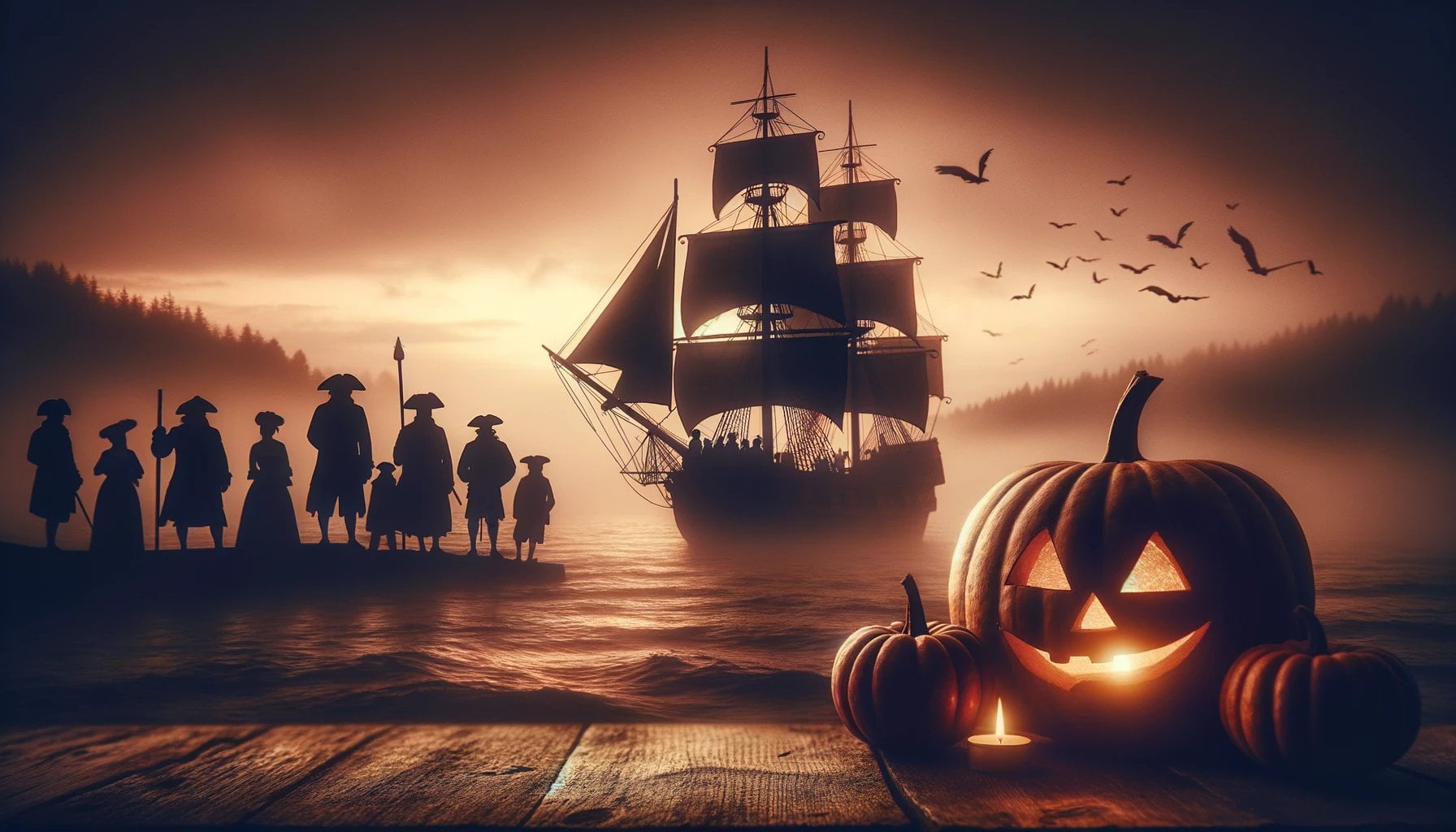
FAQ
Q1: When did Halloween first come to America?
A1: Halloween first came to America in the 1840s with Irish immigrants who were fleeing the potato famine [^1^].
Q2: How did Halloween become popular in the United States?
A2: The popularity of Halloween in the United States is largely attributed to Irish immigrants who brought their Halloween traditions, including dressing up in costumes, asking for food and money from neighbors, and playing pranks. Over time, these traditions blended with other cultural influences and evolved into the holiday celebrated today [^8^].
Q3: What are the origins of Halloween in America?
A3: The origins of Halloween in America can be traced back to the ancient Celtic festival of Samhain. This festival marked the end of the harvest season and the beginning of winter. Through the influence of European immigrants, particularly the Irish, Halloween traditions such as costumes and trick-or-treating became popular in the United States [^3^].
Q4: What role did Irish immigrants play in the history of Halloween in America?
A4: Irish immigrants played a significant role in bringing and popularizing Halloween traditions in America. Fleeing from the potato famine in the 1840s, Irish immigrants brought their customs and practices, including dressing up in costumes, going door-to-door for food and money, and playing pranks. These traditions merged with existing cultural practices to shape the modern celebration of Halloween in America [^2^] [^8^].
Q5: How has Halloween evolved over time in America?
A5: Halloween has evolved from its ancient Celtic roots to the commercialized holiday we know today. Initially, Halloween was influenced by cultural traditions, including the Catholic Church’s incorporation of the holiday into the Christian calendar. Over time, Halloween became more commercialized with the rise of retail industries and the popularization of costumes, decorations, and candy. Today, Halloween is celebrated with various activities such as dressing up in costumes, trick-or-treating, and attending parties [^4^] [^5^].
- Unveiling the Enigma: Mansoureh Khojasteh Bagherzadeh’s Public Appearances & Private Life in Iran - July 18, 2025
- Unveiling the Mystery: Mansoureh Khojasteh Bagherzadeh’s Husband: A Rare Glimpse into a Private Life - July 18, 2025
- Unveiling Masoud Khamenei’s Mother: Power, Influence, and Iran’s Future - July 18, 2025
